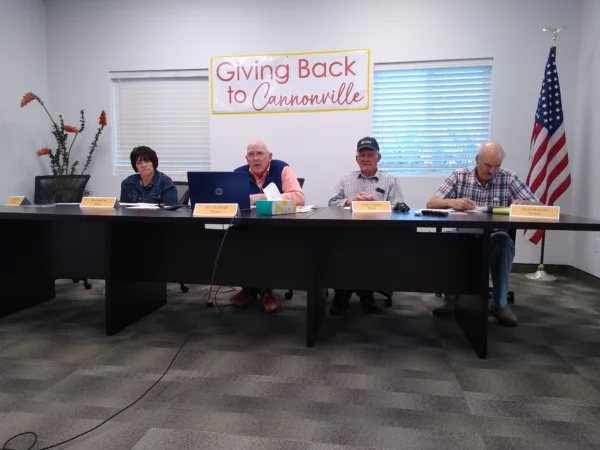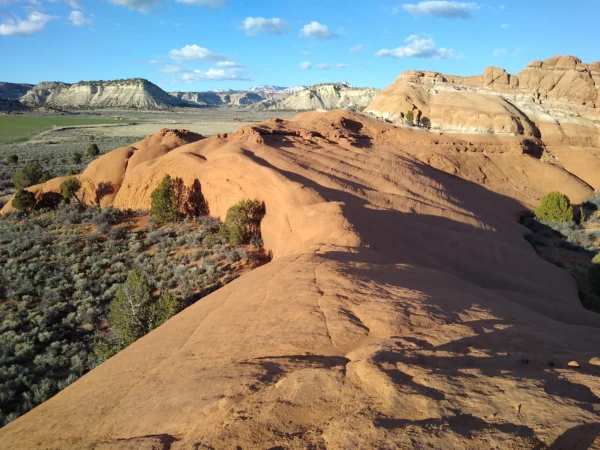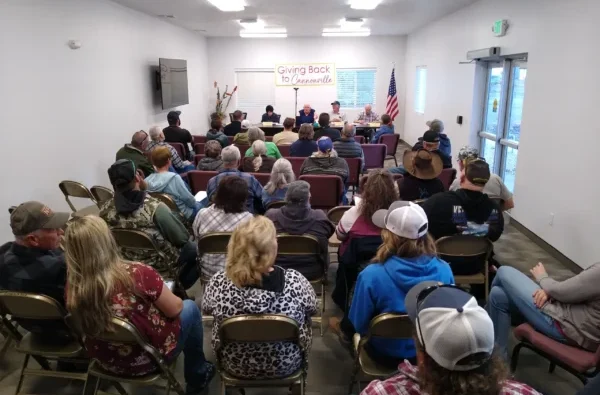Outrage erupted in Bryce Valley when Promise Rock, a piece of land near Cannonville, was given a request for proposal to be sold or leased. Rumors circulated that the RFP followed a proposal from a developer from out of town.
Midway through March, the Utah School and Institutional Trust Lands Administration, or SITLA, published a request for proposal on a property in section 32 in Cannonville. The property is 400 acres total, split down the middle by Henrieville Creek. The two parcels — 120 acres covering all of Promise Rock to the north and 280 acres of grazing land to the south — have some significance to Cannonville.
Cannonville Public Meeting
Cannonville held a public meeting addressing the topic on March 19. There was considerable opposition to “big development” in particular. Attendees brought concerns over developers’ ability to access the property and attain water rights.

Perhaps an even bigger concern was the conservation of Promise Rock as an important pillar of heritage both for Cannonville settlers and Native Americans. Most meeting attendees signed petitions proposing to save Promise Rock from possible development.
The meeting was productive. Cannonville Mayor Bill Scoffield used information and opinions from locals to compile a proposal. Cannonville has taken the position of opposing development.
Others, from Kodachrome State Park, for example, also sent in proposals to possibly annex the land into the park. Proposals had to be submitted by March 20.
Treat Rumors with Suspicion
Several rumors have circulated the valley about which big developer pushed SITLA asking to develop the land. Such rumors should be treated with suspicion.
Many seem to believe the new Clear Sky Resorts wants the property. Owner Hal Feinberg denied that claim, saying he is not looking to expand any further.
Another rumor was that it might have been a solar company wanting to put up panels. This is highly unlikely. There is no public road access to either parcel, there’s no power access and the land itself is rather bumpy — a crappy alternative to, say, a state parcel in Johns Valley.

Marla Kennedy, SITLA’s Communications and Governmental Affairs Director, explained in an email communication with The Byway that the administration’s Real Estate Planning and Development office has received several inquiries about the two parcels in Garfield County over the past few years.
“Because of this, it was in the best interest of our beneficiaries to publish an RFP to see what the market would propose,” she wrote.
Trust Lands Do Not Equal Public Lands
The public should not view Trust Lands as public lands. The public does not have a right to use these lands in the same way that they would BLM land. However, Kennedy added that her administration wants to achieve a desirable outcome for everyone.
“Trust Lands are not public lands, and our mission is clear. Maximizing Trust Land assets for revenue generation is our main priority,” she wrote. “That doesn’t mean we don’t engage with surrounding landowners, other governmental entities, or communities when possible to achieve a desirable outcome for all involved.”
All decisions about the land use are made by Trust Lands staff with approval from the Board of Trustees.
Public comments can be sent to Marla Kennedy at marlakennedy@utah.gov to be passed on to the Board of Trustees. If a proposal is awarded, there will be a more formal comment opportunity at the monthly board of trustees meeting.
– The Byway
Feature image caption: Attendees at a Cannonville public meeting addressing how to respond to the RFP on Promise Rock. March 19, 2024. Courtesy of AJ Martel, The Byway.
Edited March 29, 2024, to clarify the wording between public lands and trust lands. Also, Promise Rock is already within Cannonville’s jurisdiction, disproving The Byway‘s assumption that it would be annexed.
Read more about the rock’s interested investors in What Will Happen to Promise Rock? Well, Nothing Yet.

